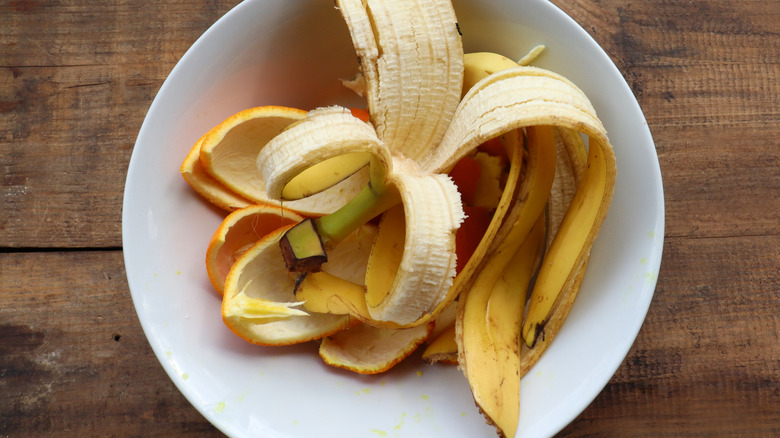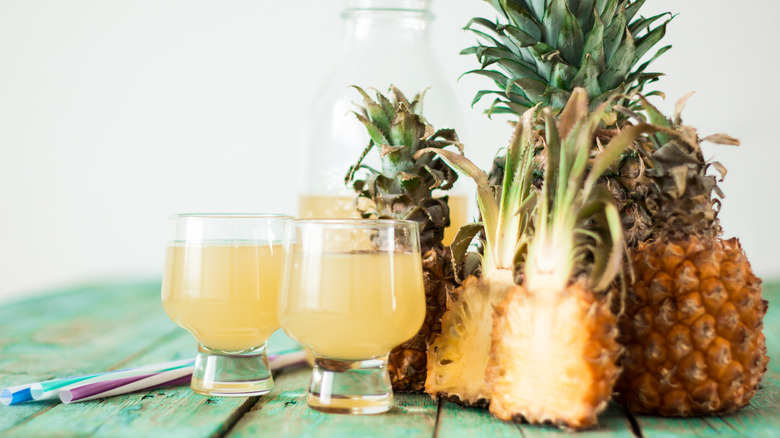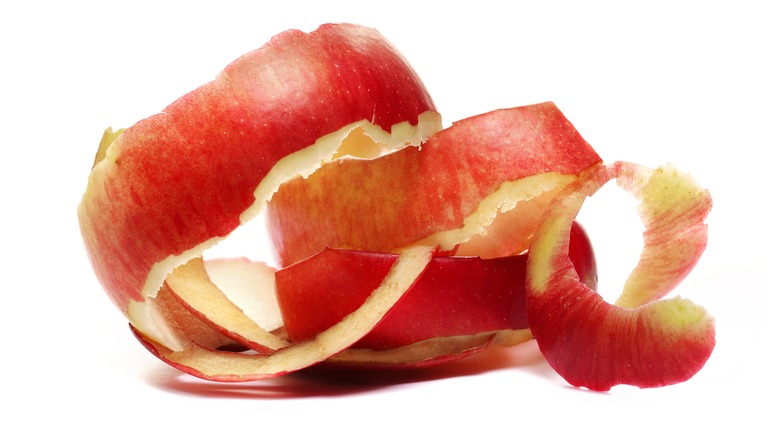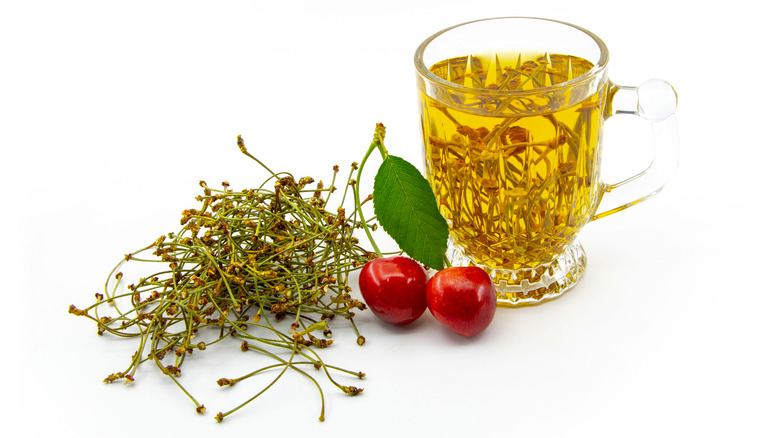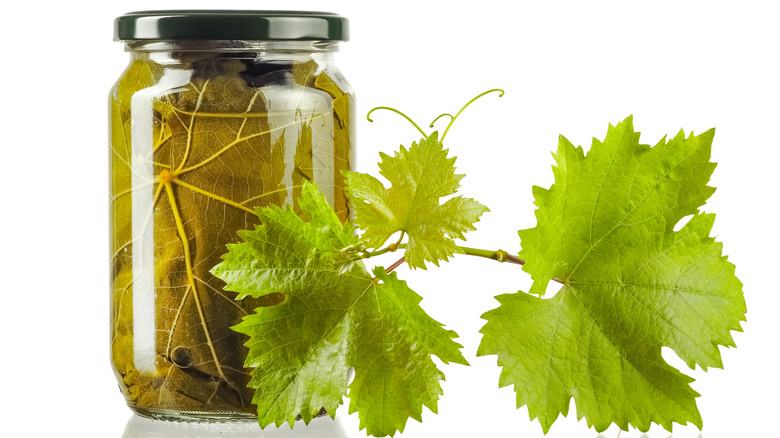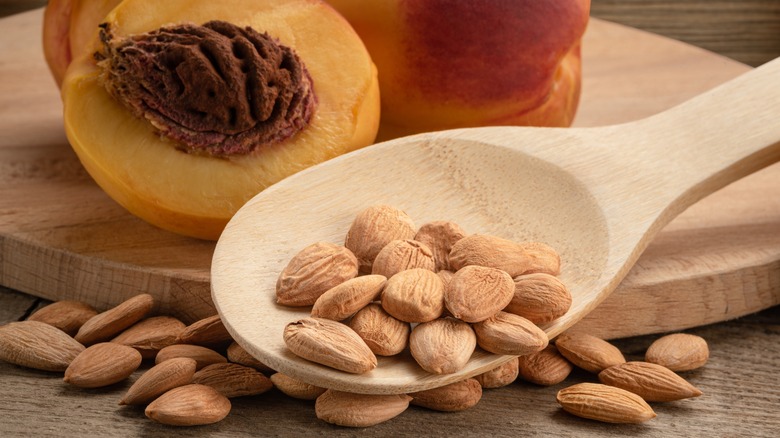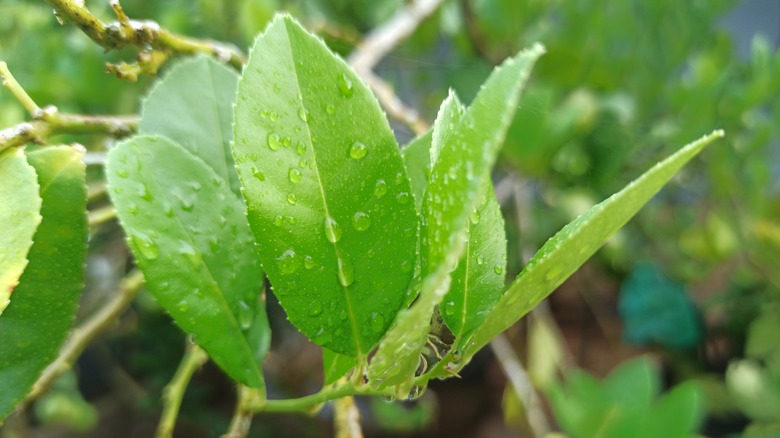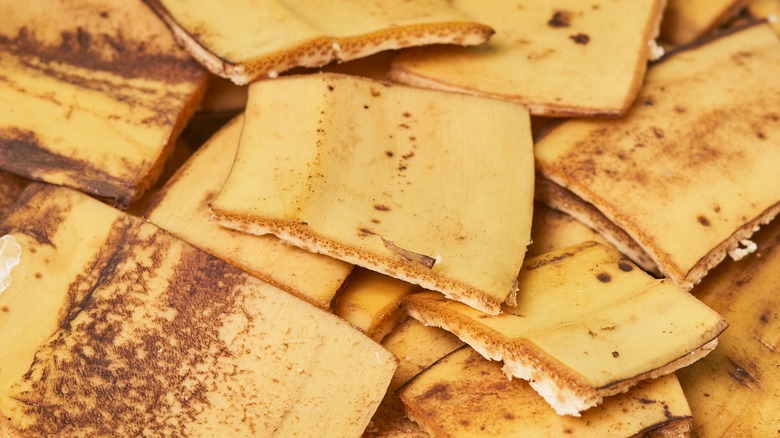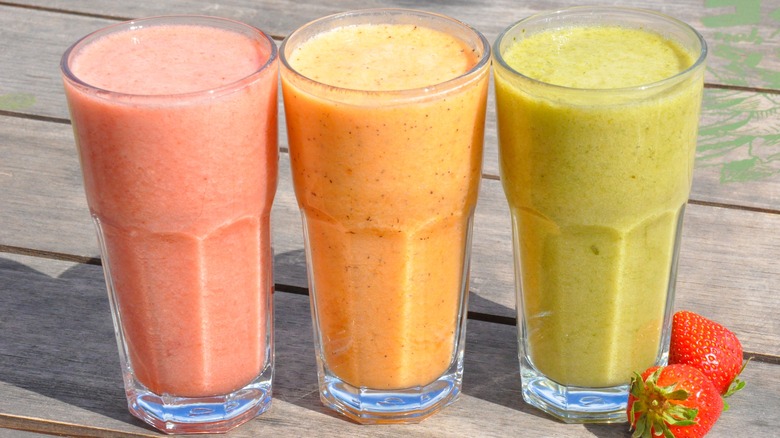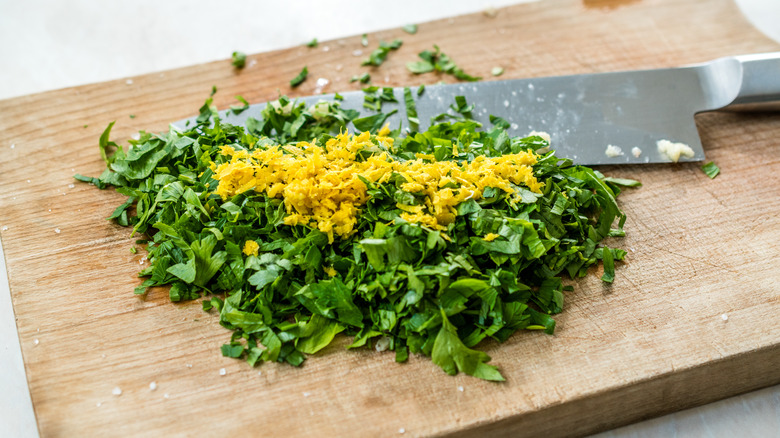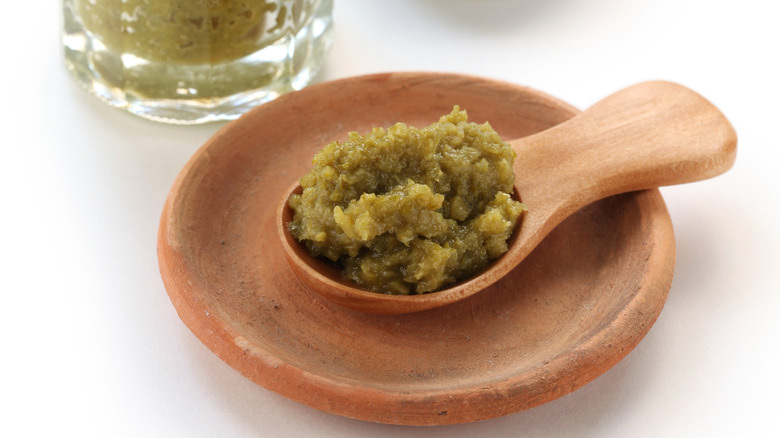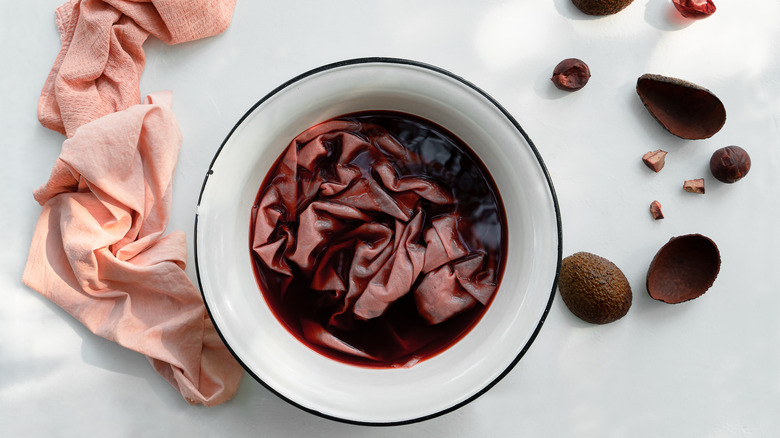12 Best Ways To Use Fruit Scraps, According To Tamar Adler - Exclusive
We may receive a commission on purchases made from links.
During the spring and summer when a lot of fruit is at its peak, there's nothing like bringing home a haul of nature's candy from the grocery store or farmer's market. A perfect piece of ripe fruit is an amazing snack on its own and can take center stage in a multitude of recipes. However, there's no denying that fruit can produce a lot of food waste. Whether it's peels, pits, or simply an overabundance of fruit that is teetering on the brink of going bad, it's challenging to use up all of the fruit you buy.
In "The Everlasting Meal Cookbook: Leftovers A-Z," food journalist, author, and James Beard Award winner Tamar Adler breaks down all the ways to use ingredients we commonly throw away, including a huge number of recipes for fruit scraps. The book is separated by ingredient type and organized alphabetically, so you can easily find the perfect use for whatever leftovers you currently have sitting in your refrigerator. It's a practical guide that helps you make the most out of the ingredients you already have. We were lucky enough to talk to Adler who shared with us her favorite ways to use fruit scraps.
1. Make a refreshing summer drink with pineapple trimmings
Fresh pineapple is great, but it always seems to produce just as much waste as it does edible fruit. Adler's go-to move for making use of these trimmings is to brew a kind of pineapple tea. "One of my favorite things I've been doing recently is making a pineapple drink using the pineapple peel and throwing in the core as well if it's too tough to eat with the flesh," she says. Simply simmer the skin and core in water until their flavor has been fully extracted, which takes around one hour. The recipe in "The Everlasting Meal Cookbook" calls for an optional cube of ginger, but Adler told us that you could also throw in your leftover ginger peels to make use of two different types of food scraps.
Since this is more of a pineapple infusion than pineapple juice, it's better if you amp up the flavor of the drink with some sweetener and extra acidity. Lime juice takes care of the latter, while Adler recommends honey or maple syrup for the former. You could drink it hot, but this beverage is super refreshing when chilled. Adler says it's a big hit with her son. Your kids might like it even more if you follow the suggestion in the book to freeze this mixture into ice pops.
2. Bake apple peels with cinnamon sugar
Apples don't strictly need to be peeled, so taking off their skins might seem antithetical to a low-waste philosophy. However, this isn't a problem if you turn the skins into something tasty on their own. As Adler explains, "I love to turn apple peels into cinnamon-sugar apple twigs ... When you're peeling apples for a pie or to make applesauce, you take the peels and you bake them with cinnamon and sugar. They're super-delicious."
To make these, toss the peels with olive oil, cinnamon, and sugar, and dehydrate them in a very low oven (170 degrees Fahrenheit is ideal). Not all ovens reliably hold such a low temperature; if you have a dehydrator, this is a great use for it. After dehydrating, you're left with a dried fruit snack that's sort of like a sweet chip. Like the pineapple drink, this is a recipe that Adler particularly recommends for people with little ones in their life.
3. Cherry stem tea may have health benefits
If you're looking for a soothing tea that offers multiple health benefits, Adler has an ingredient in mind that usually ends up in the waste bin. "Cherry stems are supposed to be incredibly salutary," she says. For her cherry stem tea recipe in "The Everlasting Meal Cookbook", Adler notes that this concoction is thought to help with gout, kidney stones, and urinary tract issues.
We should emphasize here that cherry stem tea is a folk remedy that shouldn't be viewed as a replacement for scientifically-proven treatments. However, there is some research that shows encouraging signs about at least some of these health claims. A study in the journal Frontiers in Pharmacology mentions the prevalence of cherry stem tea in Eastern European folk medicine and analyzes the chemical composition of cherry stems. The researchers conclude that cherry stems may contain compounds with mild diuretic effects.
If you want to try this potion out for yourself, you first have to dehydrate the stems to increase their shelf life. You can either infuse whole stems in boiling water or pulverize them to make your own cherry stem tea bags.
4. Use grape leaves in pickle brine
It's unlikely that you'll find leaves attached to the grapes you buy at the store, but if you happen to grow your own, you might be struggling to find uses for all the leaves. One classic application for grape leaves is the Greek dish dolmades. To make it, you construct little cigar-shaped pouches by wrapping grape leaves around a seasoned rice mixture, then cook the stuffed grape leaves in a pot. The leaves themselves have a little bit of citrusy zing, but they're mostly there as the package for the yummy rice filling.
There are, however, uses for grape leaves beyond the Mediterranean snack. "I always put a grape leaf in my cucumber pickles," says Adler. We bet the tangy taste of grape leaves works well in pickle brine, but that's not their primary purpose in pickles. They actually help keep cucumbers crispy during the pickling process. The blossom ends of cucumbers contain enzymes that soften pickles. Grape leaves neutralize these enzymes, leaving you with crunchy cukes instead of a sad, soft mess.
5. Bake overripe fruit in a galette or crisp
When your stonefruit or strawberries start to develop some soft, yucky-looking spots, it's tempting to just toss the fruit entirely. However, that's basically just throwing the baby out with the bathwater; there's a good chance that a lot of your partially rotten peaches, pears, or plums are actually still edible. Adler says, "You should pick through whatever your fruit is and cut off whatever is starting to look less promising." The resulting mangled fruits aren't particularly photogenic, but that doesn't matter for Adler's No One's The Wiser Fruit Galette (as in, no one needs to know you made it with semi-rotten fruit). "You can combine whatever you have, so if you've got two-thirds of a nectarine and one-third of a peach and four berries, that's totally fine."
A galette is a type of free-form tart or pie that's built on a sheet pan instead of in a pie plate. It's a lot less fussy than a typical American pie. Adler's recipe calls for you to put a layer of crumbs on top of the crust and under the fruit, which would help catch all the juice that comes out as the fruit cooks. If making pastry crust isn't your thing, Adler suggests making a fruit crisp instead.
6. Apricot pits hold a flavorful secret
Apricots are sweet and delicious when eaten at the height of their growing season, but their pits look more like rocks than something you could turn into food. Even worse, they contain cyanide — or more accurately, amygdalin, which can metabolize into cyanide inside your body. Per Health Canada, some people have even died from cyanide poisoning after eating too many apricot kernels.
Fortunately, you can safely consume apricot kernels, or noyaux, by toasting them first, which destroys the amygdalin (via The New York Times). Adler likes to make chef Samin Nosrat's recipe for noyaux extract. To do it, you first have to liberate the kernel inside of an apricot pit from its rough, woody shell. It's like cracking any other nut, but it takes some oomph: A hammer is the best tool for the job. Dry the kernels, then toast in a 300 Fahrenheit oven for around 10 minutes. Soak them in your liquor of choice for several months to extract their flavor.
It's a laborious process, but the resulting extract has a complex taste. It's reminiscent of almond extract but with floral notes and hints of vanilla. You can use it anywhere you would typically use almond or vanilla extract.
7. Infuse cream with citrus leaves or stonefruit kernels
Heavy cream is an incredibly versatile ingredient. Of course, it can be whipped, but it also adds richness to things like pudding or pastry cream. One potential downside of heavy cream is that it doesn't really bring much flavor to the party other than a mildly fatty dairy taste. If you want to supercharge the flavor of certain desserts, you can steep ingredients into your heavy cream to add character in depth. "I've infused cream with leaves," says Adler. "You can do orange leaves or lemon leaves to infuse whipped cream, or cream you're going to use in something."
This technique is another way to employ the flavor of stone fruit kernels (as long as you remember to toast them to make them less toxic). If you choose to flavor your cream with citrus leaves, they will add a lot of complexity. They have a floral, fruity aroma and a bitter flavor that might prove a little divisive. When paired with the right spices and other seasonings, however, they can really enhance the flavor of the dishes in which they're used.
8. Cook a tasty curry with banana peels
By now, just about everyone knows that you can save overripe bananas to make banana bread, but that's not the only way to get the maximum value out of every bunch. Did you know that you can eat banana peels? Adler's favorite way to prepare them is in a curry-like dry-fried dish called thoran. It starts by toasting mustard seeds in oil, then adding onions and a paste of garlic, ginger, and spices. You chop up banana peels and throw them in the pan with a little water and cook them until tender in the flavorful sauce. Coriander, cilantro, asafoetida (a bitter, pungent Indian spice), and cumin lend this dish an aromatic Indian character. You can eat it on rice like any other curry.
Adler also has some tips for storing banana peels. Since the peels turn brown when cooked, you can freeze them to cook them later. (Banana peels turn brown in the freezer, but that doesn't matter for this dish.) If you're eating bananas in the morning and want to save the peels to cook thoran in the evening, submerging them in acidulated water will keep them fresh. Turmeric water is another option, per Adler: "Turmeric does the same thing as acid in water in terms of keeping something from oxidizing." Since the thoran is already seasoned with turmeric, the turmeric water would work well with the flavors of the dish.
9. Freeze leftover fruit to use for smoothies
Do you buy frozen fruit specifically to blend into smoothies? If you eat a lot of fresh fruit, you might not need to buy the frozen stuff. Freezing, like baking a galette, is a way to prolong the usefulness of fruit that's on the edge of going bad. Adler told us, "I really like to cut off whatever's going bad and freeze whatever's left ... I believe the only reason you ever have to buy frozen fruit for smoothies is not remembering to freeze things when you had them."
You can just throw a bunch of fruit into a bag and stash it in the freezer if you'd like, but it will all harden together into one frozen fruit mass. If you can plan ahead, freeze your fruit on a parchment-lined baking sheet in a single layer. That way, it won't all stick together, and once it's frozen, you can transfer it to a freezer bag for more compact storage. With the sheet tray method, you'll be able to retrieve as much or as little fruit from the freezer as you would like without trying to break apart a huge chunk of fruity ice.
10. Turn citrus peels into gremolata
There are tons of ways to use citrus zest (the very outer layer of the peel), but what about the whole peel, pith included? You could always make candied peels, but unless you're in the midst of the Christmas baking season, this isn't exactly the most useful ingredient. Instead of candying her citrus peels, Adler incorporates them into a savory gremolata.
Gremolata is a condiment that combines citrus peel with herbs, garlic, and salt. You can make it with just the zest, but Adler notes that it's good with minced peel as well. "You chop it up finely and mix it with a finely chopped clove of garlic, chopped parsley, and a little bit of flaky salt," she says. Many dishes can be elevated by a sprinkling of gremolata. It's particularly great with red meat, such as a rack of lamb recipe with hazelnut gremolata, since its sharpness helps cut through rich flavors. If you make a bunch at once, Adler says it will keep for a couple of days in the fridge. For longer-term storage, you can mix the gremolata with olive oil to preserve it.
Another way to turn citrus peels into a versatile seasoning is to dehydrate them, grind them, and mix them with salt or sugar. Citrus sugar is perfect for cookies, while citrus salt adds a special touch to the rim of a margarita glass.
11. Ferment citrus zest to make kosho
Another way to make use of citrus peel (zest only this time) is to make kosho, a fermented condiment featuring citrus rind and hot chiles. Classic Japanese yuzu kosho is made with the rind of yuzu citrus, but any type of zest will work. Simply combine a large amount of citrus zest with salt, Thai chiles, and citrus juice and let stand in a covered container at room temperature to ferment for up to several weeks. In Japan, it's used as a finishing touch on sashimi, soups, and hot pots, but you can feel free to experiment with it — many foods can benefit from the sour, spicy, salty, and umami taste of kosho.
Another Asian-inspired way to use citrus peel is to dry it and use it in stir-fries. This is particularly good with mandarin or clementine rinds. Adler offers a recipe in "The Everlasting Meal Cookbook" for a beef stir-fry that combines dried peel with soy sauce, cooking wine, ginger, chiles, and Sichuan peppercorns to create an incredibly deep mix of flavors.
12. Dye your clothes or Easter eggs with avocado pits and peels
Many foods including spinach, beets, and turmeric can be used to make natural dyes. Adler happens to be a fan of using avocados. If you're assuming that the savory fruit would dye clothes green, think again — they actually make a lovely rose pink dye that can transform clothes. But it's not the avocado flesh that holds all the pigment; it's the pits and peels that turn your fabric pink.
To get the best color, you want to clean as much of the avocado flesh off of the skins and seeds as possible. The leftovers from three to six avocados should be enough. Simmer the pits and peels in water until the water turns a lovely rosy color, then let them soak in the solution overnight to extract as much pigment as possible. The next day, strain out the dyeing solution, bring it to a boil, and throw whatever you're dyeing into the bath. It should be fully pigmented in about an hour.
The dye is permanent and should last through many washes, though it may fade slightly over time. If you want the color to be brighter and longer-lasting, you can pre-treat the fabric with a solution of vinegar, alum, and soda ash. However, Adler doesn't do this, and she's had no problems with her avocado-dyed pink socks fading.
